Catching Crappie Through the Ice at Night
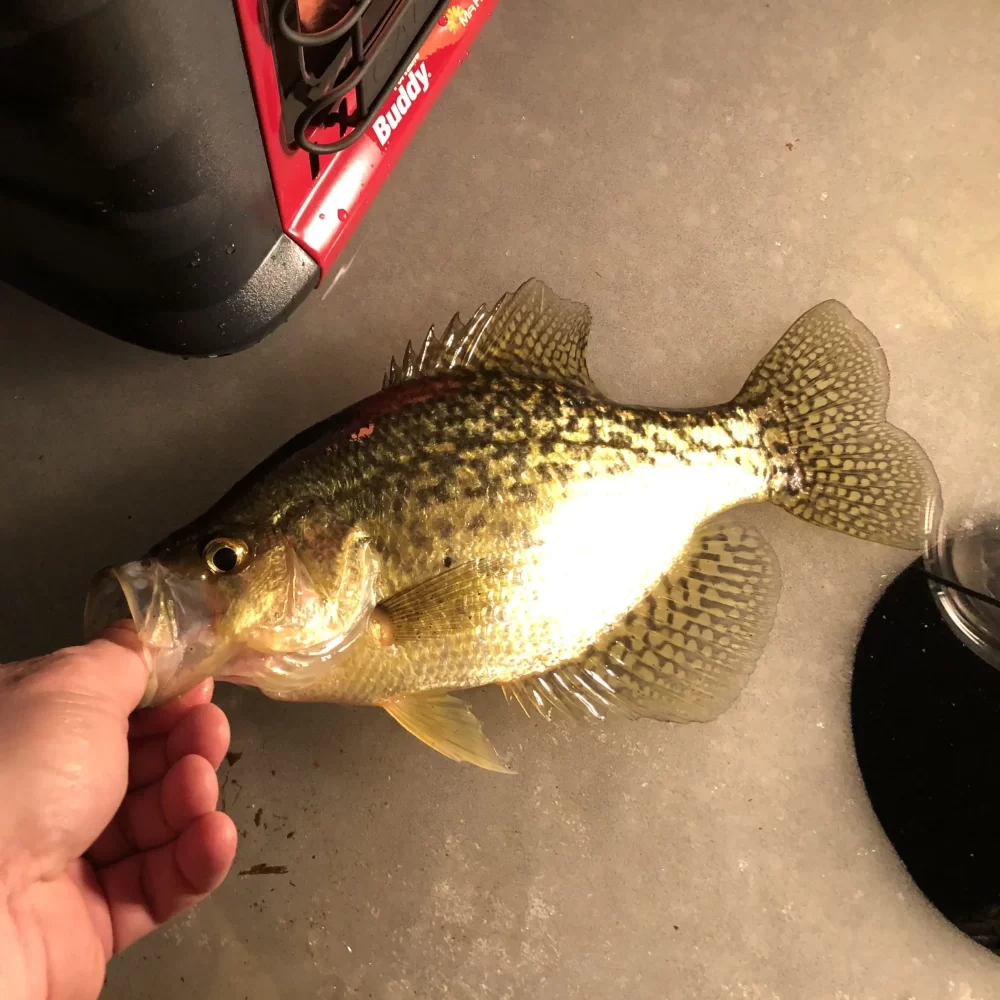
* This page contains affiliate links. The Great Lakes Fisherman may earn a commission on items purchased through these links. For more on this, please click here.
One of the most popular fish species to target through the ice is crappies. They also happen to the be a favorite of The Great Lakes Fisherman. While these tasty fish can be caught throughout the day on most lakes in the Great Lakes region, crappie are a low-light fish. This means that the best times of day to target them, especially in clear water, are in the early morning and late evening hours. In fact, one the most productive times of day for catching crappie is just before sunset to several hours after dark. But ironically, just when the crappie are starting to bite, most fisherman are heading to the car. With a little preparation and the right equipment, however, fishing into the night can be one the most rewarding experiences on the ice. If you’re new to this type of fishing and don’t know where to start, read on! The following info will help get you onto the fish fast.
Safety First
The first thing to consider when ice fishing after dark is safety. Being alone by yourself after dark can be dangerous. Always take a friend along to make sure you have help in the case of an emergency. The last thing you want is to get into trouble while you are alone out on a lake in the dark with no one around to help.
As always, follow all general ice fishing safety tips. You can find some great ice fishing tips in this article. To that end, be sure to arrive well before dark to ensure that the ice conditions are safe. This way, you can get to your spot, get setup and have time to check out the surroundings to be sure there are no obvious dangers before you lose daylight.
Finally, remember that there is always risk associated with ice fishing. When in doubt, don’t go out. Live to fish another day!
Equipment Needed
Aside from all of your standard ice fishing equipment (rod, reel, bait, auger, etc.), there are a couple of things you will need to make your night trip a success.
First off, you will need a strong light source. There are a couple of main options that you have for this, the first of which is a lantern. These come in both gas and electric varieties.
When it comes to gas lanterns, Coleman makes a dual fuel gas lantern as well as a propane lantern. Either of these are great options and will do the trick. One of the advantages of a gas lantern are that they also supply a source of heat to keep your hands warm.
The second main option for a light source is a submersible light Be sure to check your local regulations to be sure that they are legal in your jurisdiction.
Regardless of which light source you choose, the main thing is you need something that will penetrate the water column. The deeper the water you are fishing, the stronger the light you will need.
The second thing that you should have is a sonar flasher unit. Although not required, this is highly recommended as it greatly increases your catch rate, especially on the ice. For one, it lets you know if there are any fish under you. This is particularly important for ice fisherman because you are forced to fish from a single spot and lack the mobility of open water fishing. Second, it let’s you know where in the water column the fish are located. When fishing for species that tend to reside close to the bottom, this isn’t as critical because you can always find the bottom. Crappie, however, can be found throughout the water column. Without knowing specifically where they are, you can fish all night right, right over fish without a bite because you have your bait at the wrong depth. Third, it provides real time feedback on how the fish are reacting to your presentation. There is no single piece of fishing equipment that has improved my catch rates more so than a sonar flasher for ice fishing.
Calling in the Fish
Fishing under a light at night is the key to attracting crappies. Why? Because you are effectively building a food chain right under your feet! Here’s how.
Stage 1: Getting a Light Cone Established
The first stage in the process is getting the light cone in place. It doesn’t hurt to get your light going once it starts to get noticeably darker. It takes some time for the light to start working, so if you wait until dark, you may be waiting longer into the night before the bite really gets going.
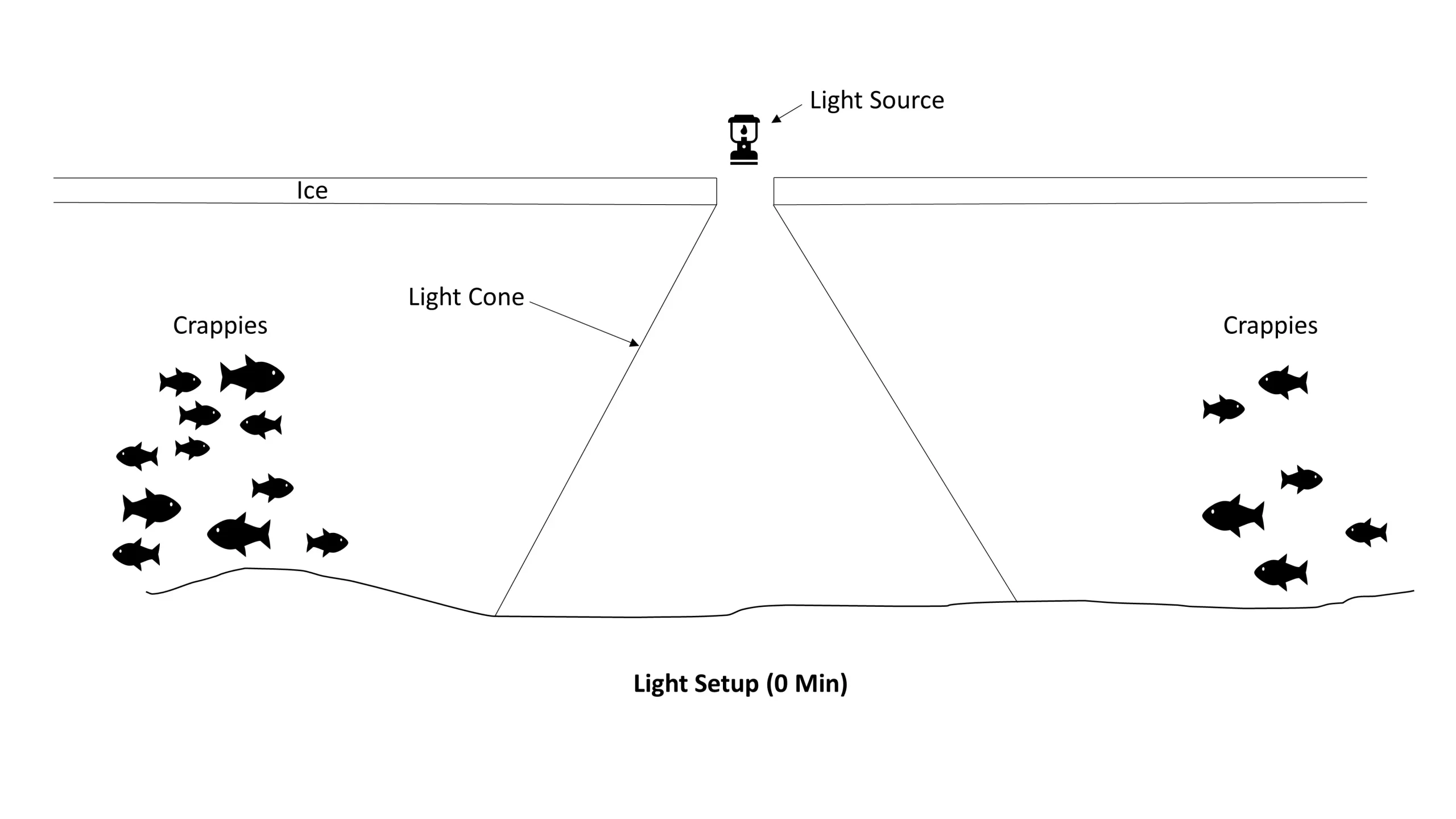
Stage 2: Plankton Show Up
As the light in this cone becomes brighter than the ambient light under the water, it will begin to attract plankton. These organisms provide food for minnows and other small fish.
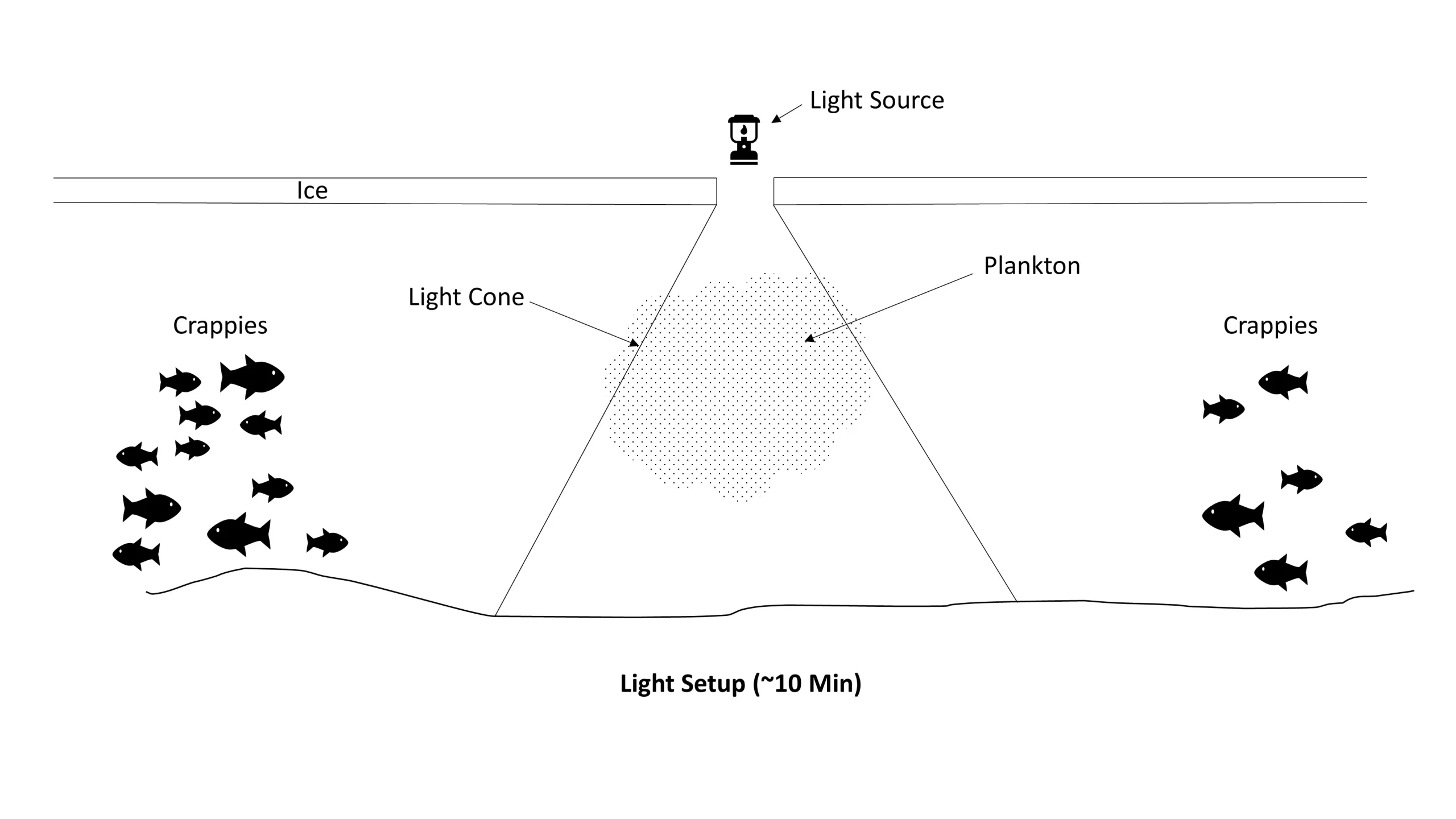
Stage 3: Minnows Show Up
Once the plankton cloud has established itself in the light cone, minnows will begin to show up to take advantage of the concentrated food source.
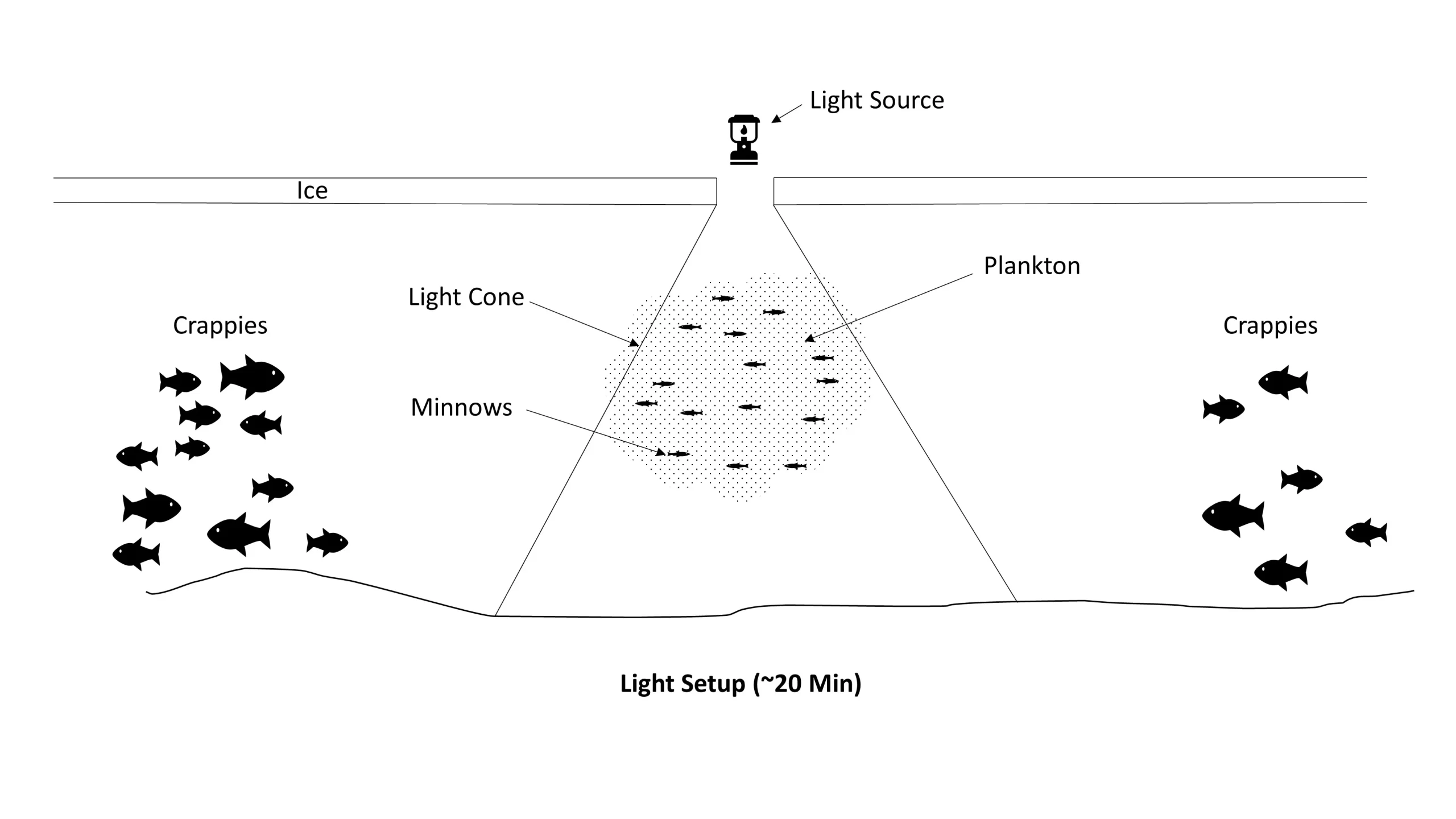
Stage 4: Crappies Show Up
Finally, crappie and other gamefish show up to begin feasting on the minnows. Now it’s time to catch some slabs!
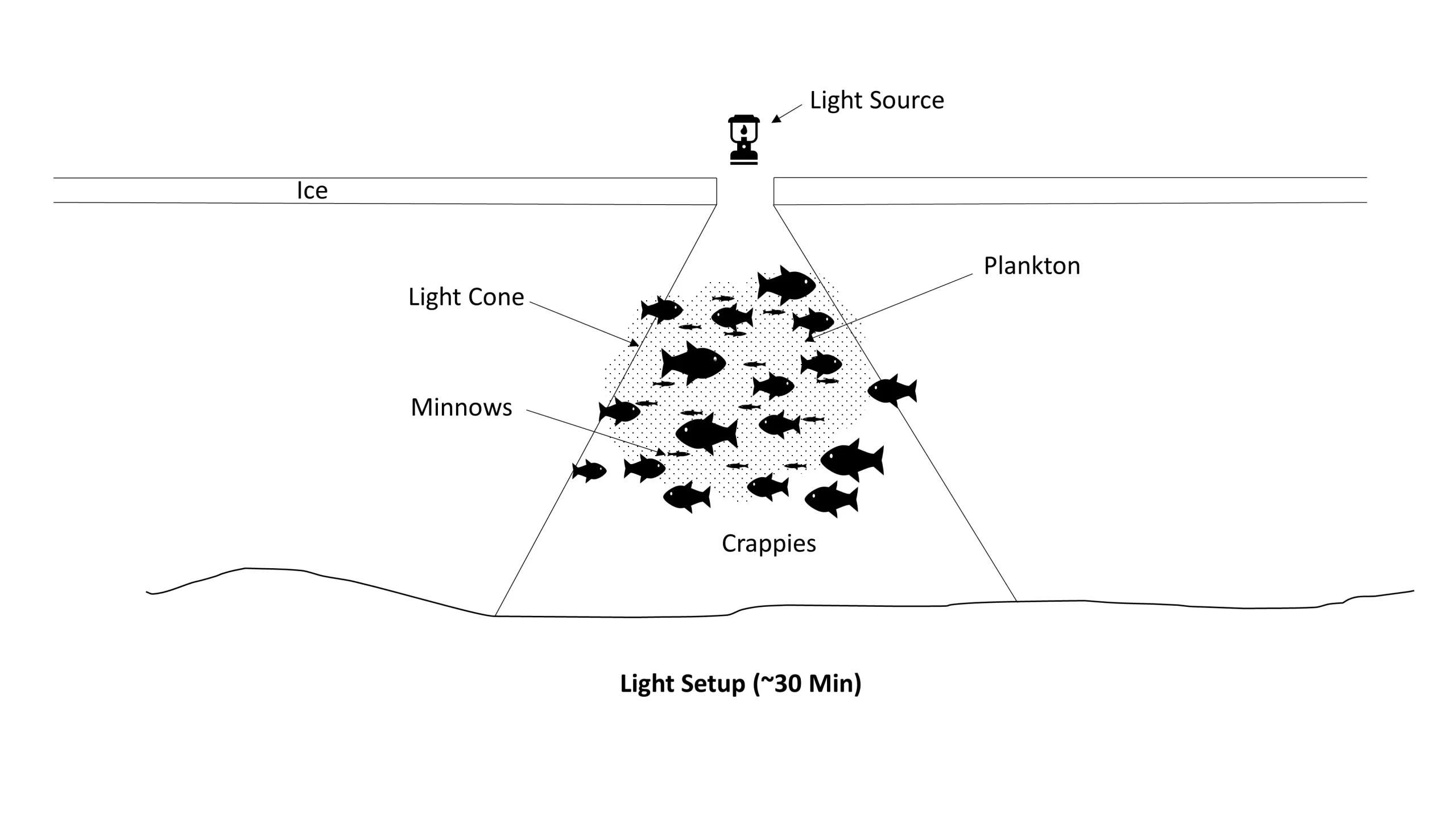
This technique is very productive as long as you are in the general area where crappies are known to inhabit. If after 30 minutes in one location there are no signs of fish, it’s probably time to move.
Catching Crappie
Now that the fish are here, it’s time to catch them. But how?
Crappie are built to hunt for prey above them. If you don’t believe it, just take a look at a crappie from the top. You will notice that both eyes are clearly visible, which means that both eyes can easily see anything that moves above them. With the lantern light providing a bright backdrop, the plankton and minnows are easy to see, making feeding easy.
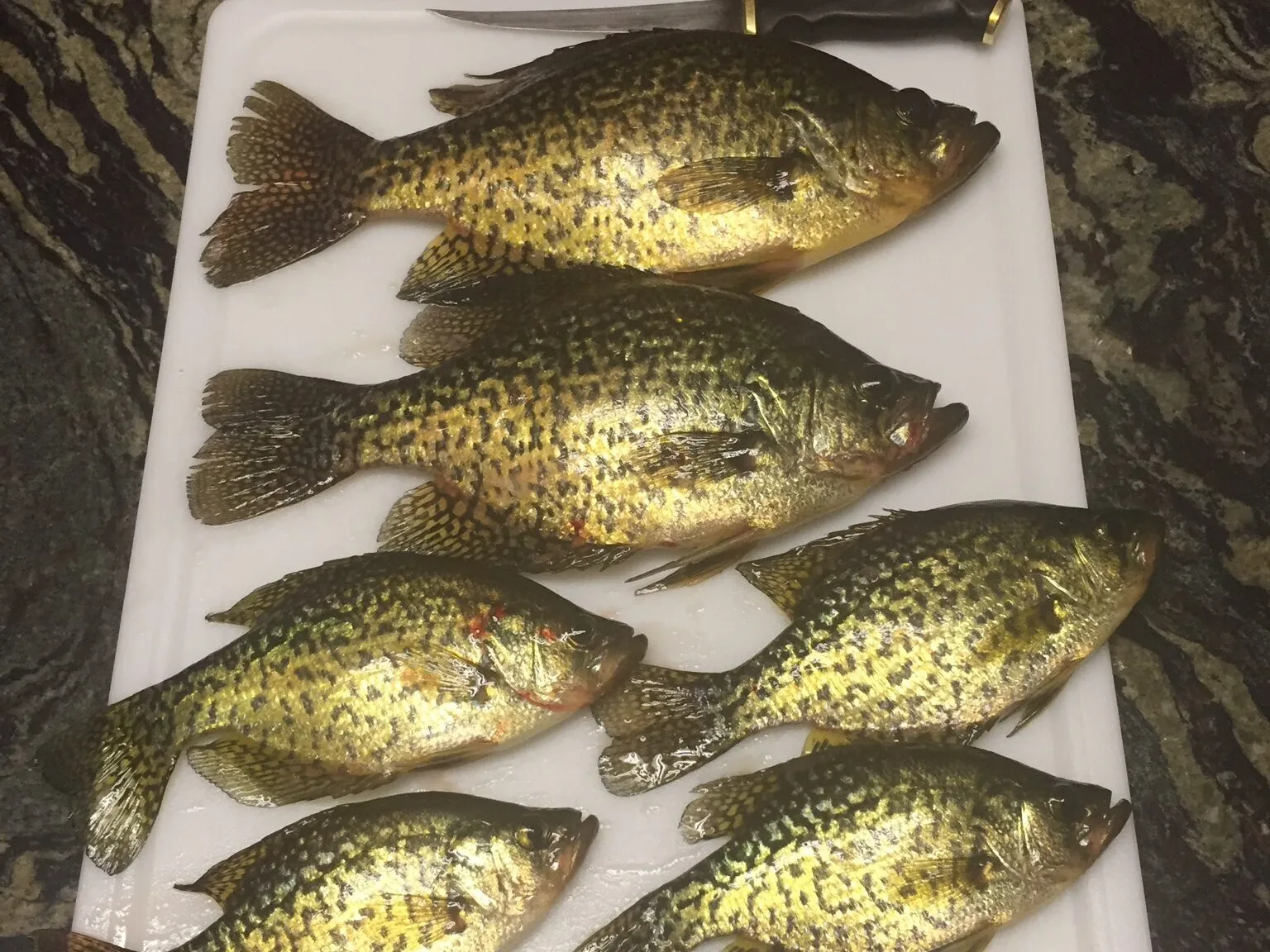
When targeting these fish, a common technique is to slowly lift your bait (usually a minnow or grub-tipped jig) using a slight jigging action. This will trigger a strike much faster than any other technique. If you are using a flasher (sonar) unit, start your bait at or just below the fish you are targeting and, using a jigging motion, bring your bait up slowly. You may notice the fish starting to follow the bait once it gets a foot or so above them. If they start to chase aggressively, a common technique is to abruptly stop the jig. This will result in the crappie sort of “running into the bait” unexpectedly which often times will elicit a strike. Just keep repeating this pattern on different targets. You may find fish at certain depths are more active than fish at other depths.
Night time fishing for crappies is one of the most productive ways I have found to catch these fish in the north. With a little experimentation, you will find the baits, colors and techniques to fill your bucket in no time. If you have any questions or are still struggling to find and catch crappies using the information in this article, feel free to drop me a comment below or send an email and I’d be happy to help provide some advice!
Stay safe out there!
